For as long as Ducati has built supersport-class race replicas—beginning with the 748 in 1995—they’ve essentially been sleeved-down versions of its superbikes. It wasn’t just the engines that were (literally) cast from the same mold as the superbikes’; they also used identical chassis and design concepts. Even when the Panigale V4 was released, ushering in a new era of four-cylinder performance, Ducati gave the middleweight Panigale V2 a new name and matchy-matchy bodywork to downplay the two platforms’ increasingly distant kinship. For 2025, the Panigale V2 comes entirely out from under the wing of its older sibling, debuting a dedicated aluminum monocoque chassis, unique—though still familial—styling, and an all-new, street-friendly 890cc V-twin engine that puts the middleweight sportbike on an entirely new trajectory.
First, the new V2 engine. Yeah, just “V2″—candidly, not as lyrical a name as Desmoquattro or Testastretta, but fine: There’s more to a desmo twin than a good name. But wait. The V2 isn’t a desmo twin. Like the V-4 Granturismo powering the Multistrada V4, the V2 doesn’t use desmodromic valve actuation, the technical signature of Fabio Taglioni, Ducati’s chief engineer from 1954 to 1989, who first wedged the opening-closing valve mechanism into a racing engine way back in 1956. Regardless, Ducati claims the desmo-less V2 engine is an impressive 21.7 pounds lighter than the outgoing 955cc Superquadro and 13 pounds lighter than the 937cc Testastretta 11°. It also says the engine produces 120 hp with 70 percent of peak torque arriving by 3,000 rpm. A look at the numbers alone places the V2′s performance in the middle of the two engines it may very well replace (we know the Superquadro is finito; can the Testastretta 11° be long for this world?). The Superquadro, which powers the previous Panigale V2, produces a claimed 155 hp at 10,750 rpm and 76.7 lb.-ft. of torque at 9,000 rpm, while the Testastretta 11°, as found in the SuperSport 950, produces 110 at 9,000 rpm and 69 lb.-ft. of torque at 6,500 rpm.
Those specs—highlighted by the purported bottom-heavy torque curve—hint at a road-oriented focus that treads closer to SuperSport 950 territory, a notion that’s further confirmed by the Panigale V2′s friendlier ergos. It has clip-ons mounted above the top triple clamp! Less surprising is the list of IMU-managed electronic rider aids, which has four ride modes with customizable parameters for cornering ABS, traction control, wheelie control, and engine-braking control. The V2 also adopts the V4′s latest quickshifter strategy, which ditches the microswitch typically found on the shift linkage, and instead relies solely on the gear sensor in order to convey “a more direct feeling.” The Panigale V2 also uses Brembo M50 brake calipers, fully adjustable suspension, and a new-generation double-sided swingarm. In all, the Panigale V2 is 37 pounds lighter than its predecessor. Will addition by subtraction be the best formula for middleweight success? Stay tuned for an upcoming first ride story.
The 2025 Panigale V2 is available in two versions: the base model ($15,995) and the S model ($18,995). The base model comes as a biposto version and uses fully adjustable suspension from Marzocchi and KYB. The monoposto S model uses an Öhlins NIX 30 fork and Öhlins monoshock. It also uses a lighter lithium-ion battery, and is equipped with a pit lane limiter and launch control. The upgrade helps shed 7 pounds from the curb weight.
- KTM 990 RC R, $TBD
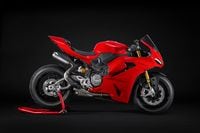
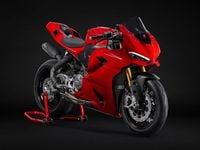
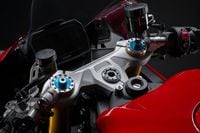
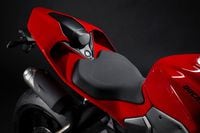
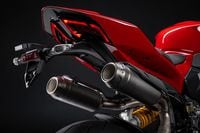
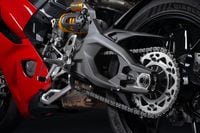
/cloudfront-us-east-1.images.arcpublishing.com/octane/XNVY3EVWZFCEVPUGJGAN633LXE.jpg)
/cloudfront-us-east-1.images.arcpublishing.com/octane/2PLTVHXY7FDSPFHKU5CFOC43ZY.jpg)
/cloudfront-us-east-1.images.arcpublishing.com/octane/B6M3WTRLFZGNXBEATNXPVGBBD4.jpg)
/cloudfront-us-east-1.images.arcpublishing.com/octane/4CMH3FI73BEM5D6MFYX42FLDSQ.jpg)
/cloudfront-us-east-1.images.arcpublishing.com/octane/RIHAPYNWU5H3XAOXNOPRWCBTQA.jpg)
/cloudfront-us-east-1.images.arcpublishing.com/octane/HU4NUBCL3VAFZA75VYRCMAUHVM.jpg)
/cloudfront-us-east-1.images.arcpublishing.com/octane/OB43AZK7TRA6XLZL5WRDVW2TDA.jpg)
/cloudfront-us-east-1.images.arcpublishing.com/octane/5G44Y3FXWNFSTEQKCA355PXOPU.jpg)

/cloudfront-us-east-1.images.arcpublishing.com/octane/XRI4GTLCVBA5NESASCBIR5LYQI.jpg)
/cloudfront-us-east-1.images.arcpublishing.com/octane/EF7566PXARGMBAOMLWTECYL3LE.jpg)
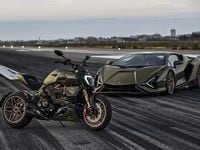
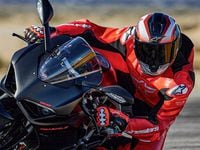

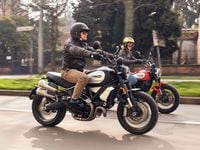

/cloudfront-us-east-1.images.arcpublishing.com/octane/3LASNXSWUZFFPISURDJF3OCWBU.jpg)
/cloudfront-us-east-1.images.arcpublishing.com/octane/2BHJKWUTBNBTLMQCKDNVEG6DKQ.jpg)
/cloudfront-us-east-1.images.arcpublishing.com/octane/MPHXIIV54NAU5L6E4SYZHCXVRM.jpg)



/cloudfront-us-east-1.images.arcpublishing.com/octane/WYXFHF4ZOBBTXELIZDB2FJXU64.jpg)
/cloudfront-us-east-1.images.arcpublishing.com/octane/K5FNV7ONUVDXJJ2H5BIWUGBGTI.jpg)